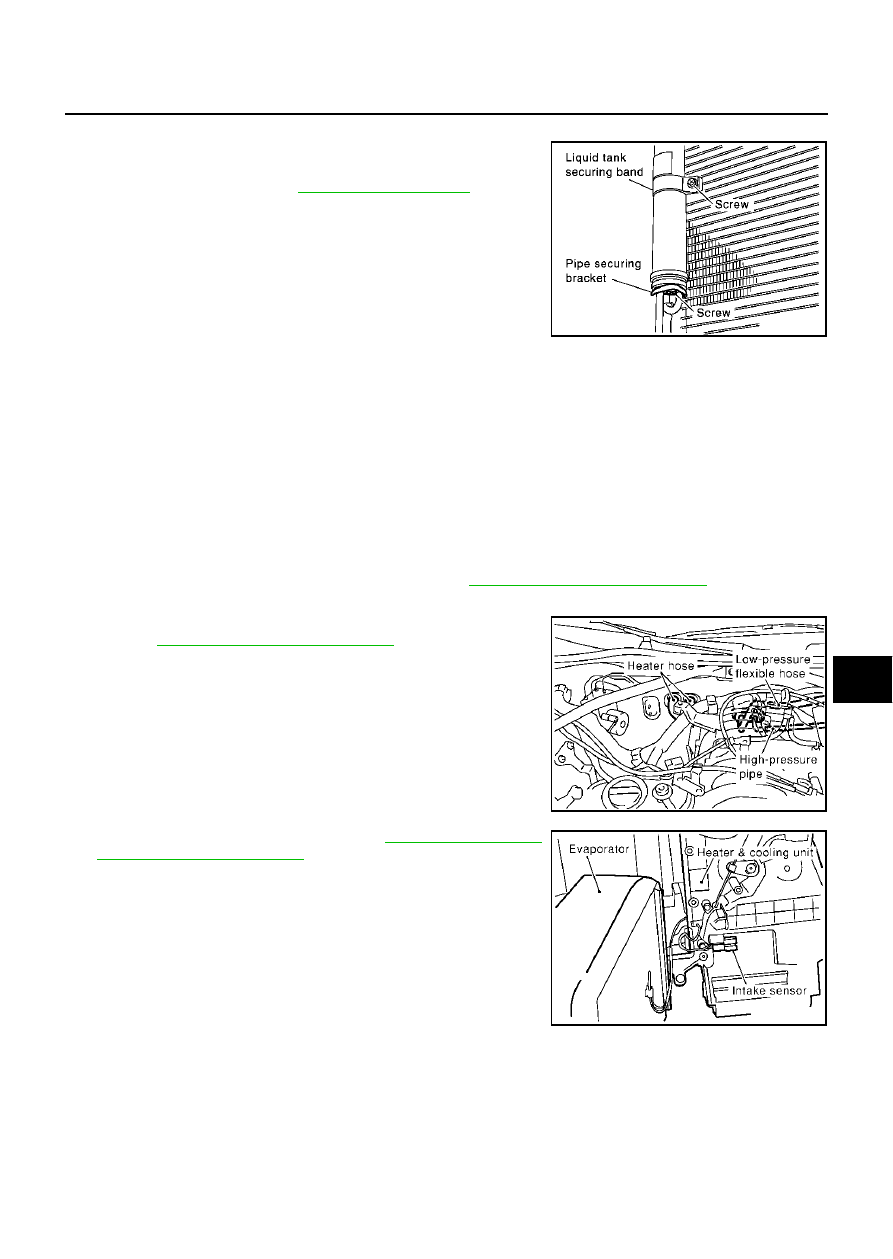Infiniti F50. Manual - part 157

REFRIGERANT LINES
ATC-153
C
D
E
F
G
H
I
K
L
M
A
B
ATC
REMOVAL
1.
Use a refrigerant collecting equipment (for HFC-134a) to dis-
charge the refrigerant.
2.
Remove front grille. Refer to
3.
Unscrew, and remove the securing bracket piping.
4.
Unscrew liquid tank securing bands.
5.
Pull out the liquid tank and liquid tank securing bands through
the top.
INSTALLATION
Installation is basically the reverse order of removal.
CAUTION:
Replace refrigerant pressure sensor O-ring with a new one. Apply compressor oil prior to installation.
Evaporator
EJS000AD
REMOVAL
1.
Remove engine cover and air cleaner cover. Refer to
2.
Use a refrigerant collecting equipment (for HFC-134a) to discharge the refrigerant.
3.
Drain coolant from cooling system and disconnect heater hoses.
Refer to
CO-9, "Changing Engine Coolant"
.
4.
Disconnect low-pressure flexible hose and high-pressure pipe
from the evaporator.
CAUTION:
Cap or wrap the open ends of low-pressure flexible hose
and high-pressure pipe with a suitable material such as a
vinyl tape to avoid the entry of air.
5.
Remove heater & cooling unit. Refer to
6.
Remove cooler grommet, expansion valve cover, expansion
valve.
7.
Remove air mix door motor and mode door motor bracket.
8.
Remove evaporator cover.
9.
Slide the evaporator, then remove it from the heater & cooling
unit.
10. Remove intake sensor from the evaporator, then remove evapo-
rator.
SJIA0133E
Securing bracket piping mounting screws
Tightening torque
: 4.0 - 5.0 N·m (0.41 - 0.51 kg·m, 36 - 44 in-lb)
Liquid tank securing band mounting screw
Tightening torque
: 2.94 - 3.82 N·m (0.3 - 0.38 kg·m, 26 - 33 in-lb)
RJIA0318E
RJIA0110E